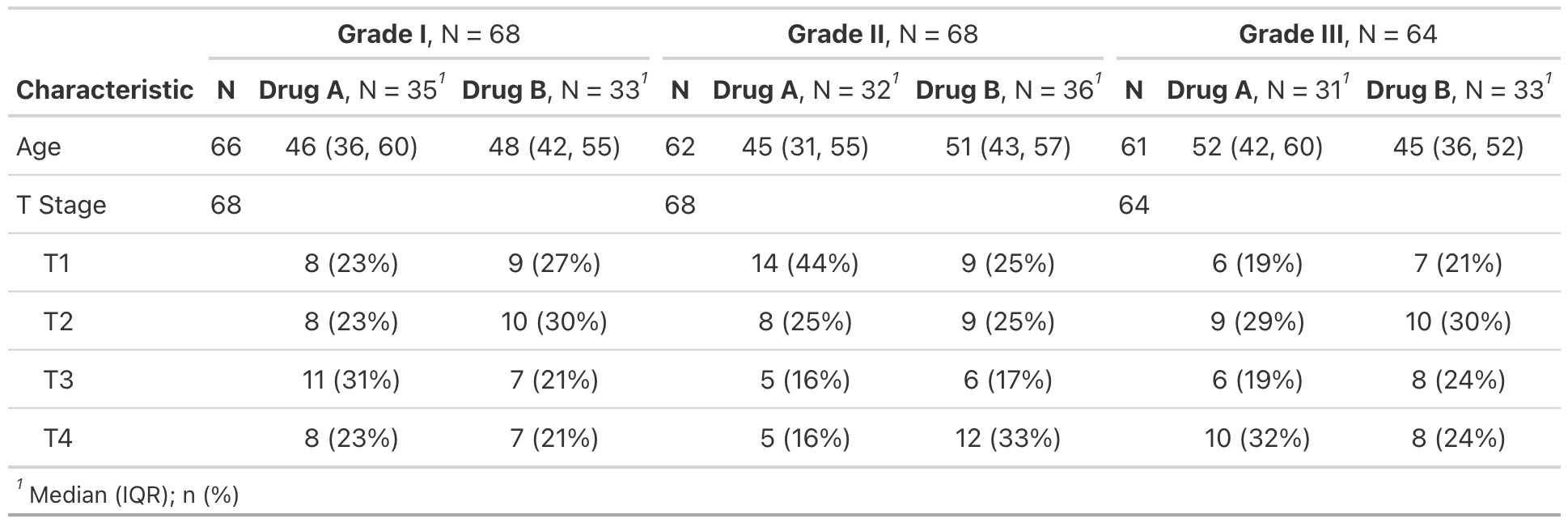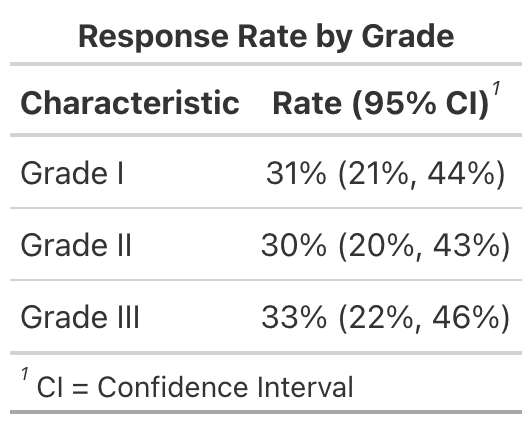Description
Usage
Arguments
Tips
Example Output
Author
See Also
Examples
Run this code# \donttest{
# Example 1 ----------------------------------
tbl_strata_ex1 <-
trial %>%
select(age, grade, stage, trt) %>%
mutate(grade = paste("Grade", grade)) %>%
tbl_strata(
strata = grade,
.tbl_fun =
~ .x %>%
tbl_summary(by = trt, missing = "no") %>%
add_n(),
.header = "**{strata}**, N = {n}"
)
# Example 2 ----------------------------------
tbl_strata_ex2 <-
trial %>%
select(grade, response) %>%
mutate(grade = paste("Grade", grade)) %>%
tbl_strata2(
strata = grade,
.tbl_fun =
~.x %>%
tbl_summary(
label = list(response = .y),
missing = "no",
statistic = response ~ "{p}%"
) %>%
add_ci(pattern = "{stat} ({ci})") %>%
modify_header(stat_0 = "**Rate (95% CI)**") %>%
modify_footnote(stat_0 = NA),
.combine_with = "tbl_stack",
.combine_args = list(group_header = NULL),
.quiet = TRUE
) %>%
modify_caption("**Response Rate by Grade**")
# }
Run the code above in your browser using DataLab

